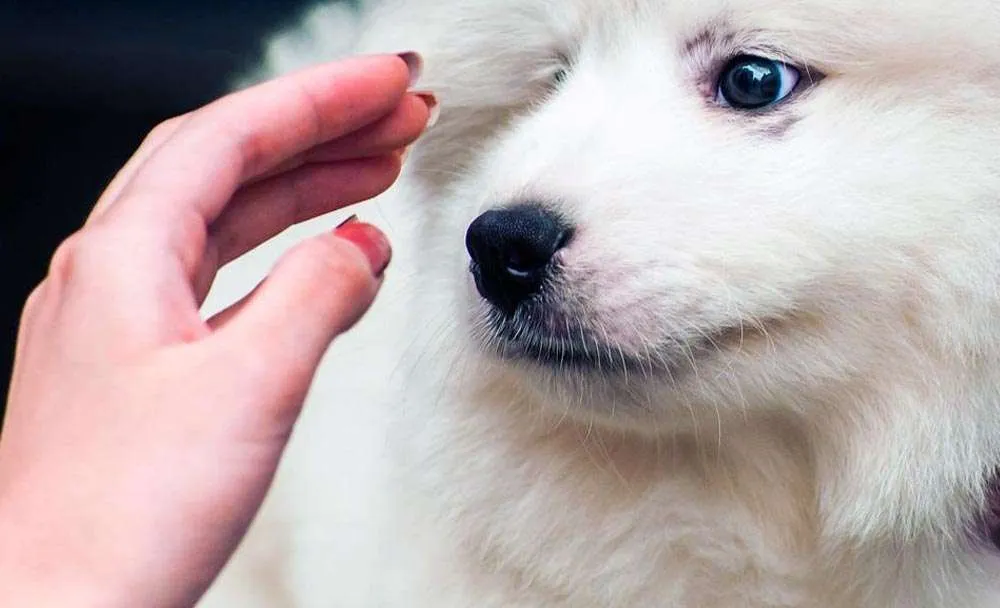Training Samoyed Dogs is very tasking, and if you own a Samoyed and want to train your dog to be obedient, this blog post will help you.
Are you taken aback by your Samoyed dog’s hyperactivity and penchant for being overly excited and uncontrollable?
Do you feel getting them to listen to you and heed your command is an uphill task? This post will instruct you on training your Samoyed puppy.
Are Samoyed easy Dogs to train?
No, they are not. Samoyeds are free-spirited dogs with bubbly personalities that get bored quickly.
Samoyed dogs are also clever and know how to get what they want, making training them to be challenging.
When to train your Samoyed
Like all dogs, the best time to begin training your Samoyed is when they are small and specific traits haven’t yet set in.
The ideal age is between 7 and 8 weeks old. At this age, they are old enough to understand signals and commands.
Like all dogs, you should note that Samoyeds get their behaviors from their experience or environment.
So, delaying their training until they are juveniles (6 months and above) will make it even harder to train them.
How to make Samoyed training easier
As earlier noted, training a Samoyed can be challenging and tasking. Despite the apparent difficulty, you can still make it easier on yourself and your Samoyed by following these valuable tips listed below:
Controlling the Samoyed’s movement
The first thing to note is to limit your Samoyed’s movement as early as possible.
A Samoyed left to itself will roam freely in the house, destroying and chewing everything in its path.
As hyper dogs, they can’t help themselves. They can also defecate indoors if not controlled.
Ensure they are housebroken and know where to urinate or defecate.
You can control their movement by limiting them to specific rooms or putting them in a crate when they disobey the rules.
Start by giving them access to only one room, then slowly open the other rooms to them.
Device and stick to a training schedule
You must create a training schedule for your Samoyed and stick to it. When you do this, your puppy will quickly learn discipline and adjust his behavior accordingly.
Your training should not be limited to tricks, but should also cover the overall conduct of the Samoyed and everything else.
When you have a schedule, you follow through; the Samoyed tend to behave well, not only with you but with others.
Training Schedule for Samoyed Dogs
| Age | Training Schedule |
| 7 weeks old | At this age, only train your Samoyed on how to go about everyday life like eating, sleeping, and grooming. It would help if you kept a particular spot and plate for feeding so that when your Samoyed is at the location and sees you grab the food plate, it knows it is feeding time. Ensure you put the plate in the same spot, so it knows when it’s time to eat and where to find food. The same goes for crate training. You can start putting your Samoyed in a crate at this time, so they can learn that the box is where they can relax and sleep. You can also start teaching them how to control their bladder. |
| 8 weeks old | By this time, your Samoyed puppy must start learning to stay calm indoors. It would be advisable if you did this by not letting them roam about unnecessarily. When your Samoyeds are relaxed, it is easier to train them. |
| 10 weeks old | You can start training them on how to behave when they are out for a walk at this age. Ten weeks old is when they need to learn signals and how to take permission before entering open doors. It would assist if you also taught them how to listen and what to do when you call them. At ten weeks old, they are old enough to understand correction and reward. |
| 12 weeks old | Start training your Samoyed to control its impulses. Begin with “sit” and “stay” and ensure they understand and get it. Learning to sit still will enable them to learn patience and self-control. |
| 16 weeks old | You can now start taking your Samoyed on walks. At this point, they should be able to learn how to focus and ignore everything around them. Your Samoyed needs to learn to socialize, primarily how to act around other dogs and humans. |
Training focus for Samoyed Dogs
Train your Samoyed to be calm.
Samoyed puppies get quickly excited and can become uncontrollable. To make training your Samoyed easier, you must first get them under control.
A hyperactive Samoyed is a source of frustration for most pet owners. To avoid that, teach them to stay in a part of the room or limit their access to one room to teach them patience.
It would make things easy if you also taught them to understand basic commands like “stay,” “sit,” and “stop.”
Understanding all these commands will ultimately make training them more manageable.
Employ the Balance technique.
Most experts will say that the balance technique is the best training for your Samoyed puppy.
This technique entails punishment for bad behavior and rewards for doing the right thing.
This type of training is called mental Conditioning.
They learn from experience. If you give your dogs rewards for good behavior, the dogs will do more of it and less of the things that made you punish them.
Please note that the punishment should not be harsh. It can be you making your dogs do something they don’t like or taking them to the room.
Be Calm and Confident.
Your Samoyed will listen to you when they know you are the one in control.
You must be calm and confident when you train them; otherwise, they may not listen.
Ensure you are the leader and consistent in what you demand and teach them.
They will trust you more and obey your instructions if they know you are the one in control.
Why is it difficult to train a Samoyed?
1. Samoyeds are stubborn dogs.
Which makes them challenging to train. To counter these, you need to be very vocal by encouraging them positively.
2. They get easily bored.
Samoyed dogs are known to get bored and walk away from their trainer.
Hyperactive dogs need to move consistently, making it hard to pin them to a spot to train them.
3. They love to roam.
When they feel their freedom is about to be taken from them, they may have other ideas and become difficult to train or command.
Once they deduce that you’re trying to make them sit in one spot, they may start dissenting.
Conclusion
While it may be challenging to train your Samoyed, it’s achievable.
You only need to follow a schedule and be consistent with the plan.
If you can train your Samoyed successfully, they make an exciting and intelligent pet.






